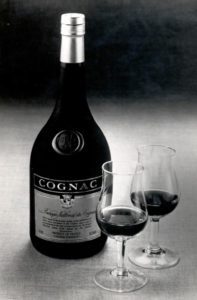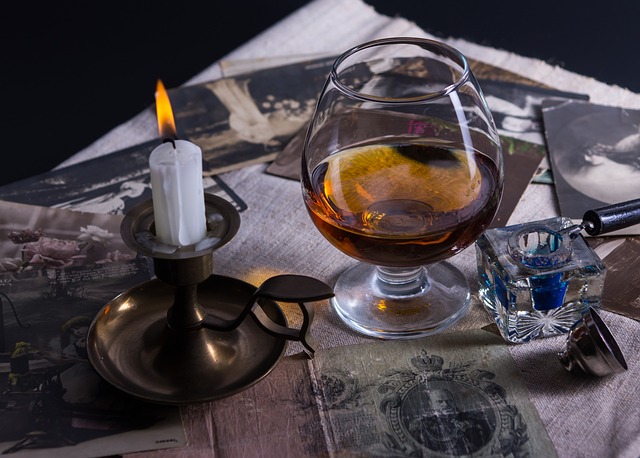By Bob Lipinski
Cognac is a brandy distilled from the fermented juice of grapes in the province of Charente and is also the name of a region in the southwest of France, north of Bordeaux and southwest of Paris. The region’s stony, chalk-rich soil (because of ancient oyster beds), its climate, the specific grape varieties grown there, and the methods used in distilling, blending, and aging the brandy, gives cognac its unique flavor.
Cognac AOC area of production was first defined in 1909 and then finalized in 1938. The six defined grape-growing areas are Grande Champagne, Petite Champagne, Borderies, Fins Bois, Bons Bois, and Bois Ordinaires (Bois à Terroirs).
The following grape varieties are used to produce cognac: Ugni Blanc, Colombard, Folle Blanche, Montils, and Sémillon, with lesser amounts of Folignan. The grapes are harvested quite early, ensuring a wine with a low alcohol content and a very high acid level.
The wine must be double distilled in a copper pot still called an alembic Charentais. After the cognac has been distilled, it is put into barrels that are made of oak from the Limousin or Tronçais forests. The oak has a considerable influence on the bouquet and taste of the cognac. When cognac is put in the barrel, it is about 70 percent alcohol and is clear in color. During the aging process, the oak from the barrels imparts taste, color, and odor to the final product, turning the clear spirit into a mellow, golden drink. The older a cognac becomes, the smoother its flavor and the subtler its aroma.
Most cognacs are blends that combine brandies from varying sections and vintages into a final product. In the town of Cognac, there are barrels of cognac that have been aging for a hundred years or more.
Label designations as of 2018
- VS/ Three-Star (***): aged a minimum of 2 years
- Supérieur: aged a minimum of 3 years
- VSOP/ Réserve/ Vieux: aged a minimum of 4 years
- Vieille Réserve/Réserve Rare: aged a minimum of 5 years
- Napoléon / Très Vieille Réserve: aged a minimum of 6 years
- XO/ Hors d’Âge/ Extra/ Ancestral: aged a minimum of 10 years
- XXO: aged a minimum of 14 years

Cognac
Enjoying Cognac
Although most people prefer not to mix cognac, younger (VS, or three-star) cognac makes delightful highballs when mixed with soda water, leaving the palate more receptive to wines. Cognac and freshly squeezed orange juice make an enjoyable cocktail. After dinner, cognac is the perfect companion for coffee.
Bob Lipinski is the author of 10 books, including “101: Everything You Need To Know About Whiskey” and “Italian Wine & Cheese Made Simple” (available on Amazon.com). He consults and conducts training seminars on Wine, Spirits, and Food and is available for speaking engagements. He can be reached at www.boblipinski.com OR bkjm@hotmail.com.


 Bob Lipinski, author of 10 books; writes, consults, and conducts training seminars on Wine, Spirits, and Food and is available for speaking engagements.
Bob Lipinski, author of 10 books; writes, consults, and conducts training seminars on Wine, Spirits, and Food and is available for speaking engagements.
Recent Comments